�
Digital Signal ProcessingJohn G. Proakis Dimitris K. ManolakisFourth Edition
Pearson Education LimitedEdinburgh GateHarlowEssex CM20 2JEEngland and Associated Companies throughout the worldVisit us on the World Wide Web at: www.pearsoned.co.uk© Pearson Education Limited 2014 All rights reserved. No part of this publication may be reproduced, stored in a retrieval system, or transmitted in any form or by any means, electronic, mechanical, photocopying, recording or otherwise, without either the prior written permission of the publisher or a licence permitting restricted copying in the United Kingdom issued by the Copyright Licensing Agency Ltd, Saffron House, 6–10 Kirby Street, London EC1N 8TS.All trademarks used herein are the property of their respective owners. The use of any trademark in this text does not vest in the author or publisher any trademark ownership rights in such trademarks, nor does the use of such trademarks imply any affi liation with or endorsement of this book by such owners. British Library Cataloguing-in-Publication DataA catalogue record for this book is available from the British Library Printed in the United States of AmericaISBN 10: 1-292-02573-5ISBN 13: 978-1-292-02573-5ISBN 10: 1-292-02573-5ISBN 13: 978-1-292-02573-5�
Table of ContentsPEARSON CUSTOM LIBRARY I1. Introduction11John G. Proakis/Dimitris G. Manolakis2. Discrete-Time Signals and Systems4343John G. Proakis/Dimitris G. Manolakis3. The z-Transform and Its Application to the Analysis of LTI Systems151151John G. Proakis/Dimitris G. Manolakis4. Frequency Analysis of Signals229229John G. Proakis/Dimitris G. Manolakis5. Frequency-Domain Analysis of LTI Systems307307John G. Proakis/Dimitris G. Manolakis6. Sampling and Reconstruction of Signals395395John G. Proakis/Dimitris G. Manolakis7. The Discrete Fourier Transform: Its Properties and Applications461461John G. Proakis/Dimitris G. Manolakis8. Efficient Computation of the DFT: Fast Fourier Transform Algorithms523523John G. Proakis/Dimitris G. Manolakis9. Implementation of Discrete-Time Systems577577John G. Proakis/Dimitris G. Manolakis10. Design of Digital Filters669669John G. Proakis/Dimitris G. Manolakis11. Multirate Digital Signal Processing767767John G. Proakis/Dimitris G. Manolakis12. Linear Prediction and Optimum Linear Filters841841John G. Proakis/Dimitris G. Manolakis13. Adaptive Filters899899John G. Proakis/Dimitris G. Manolakis�
II14. Appendix: Random Number Generators981981John G. Proakis/Dimitris G. Manolakis15. Appendix: Tables of Transition Coefficients for the Design of Lnear-Phase FIR Filters987987John G. Proakis/Dimitris G. Manolakis16. References and Bibliography993993John G. Proakis/Dimitris G. Manolakis10071007Index�
IntroductionDigitalsignalprocessingisanareaofscienceandengineeringthathasdevelopedrapidlyoverthepast40years.Thisrapiddevelopmentisaresultofthesignificantadvancesindigitalcomputertechnologyandintegrated-circuitfabrication.Thedig-italcomputersandassociateddigitalhardwareoffourdecadesagowererelativelylargeandexpensiveand,asaconsequence,theirusewaslimitedtogeneral-purposenon-real-time(off-line)scientificcomputationsandbusinessapplications.Therapiddevelopmentsinintegrated-circuittechnology,startingwithmedium-scaleintegra-tion(MSI)andprogressingtolarge-scaleintegration(LSI),andnow,very-large-scaleintegration(VLSI)ofelectroniccircuitshasspurredthedevelopmentofpowerful,smaller,faster,andcheaperdigitalcomputersandspecial-purposedigitalhardware.Theseinexpensiveandrelativelyfastdigitalcircuitshavemadeitpossibletoconstructhighlysophisticateddigitalsystemscapableofperformingcomplexdigitalsignalpro-cessingfunctionsandtasks,whichareusuallytoodifficultand/ortooexpensivetobeperformedbyanalogcircuitryoranalogsignalprocessingsystems.Hencemanyofthesignalprocessingtasksthatwereconventionallyperformedbyanalogmeansarerealizedtodaybylessexpensiveandoftenmorereliabledigitalhardware.Wedonotwishtoimplythatdigitalsignalprocessingisthepropersolutionforallsignalprocessingproblems.Indeed,formanysignalswithextremelywideband-widths,real-timeprocessingisarequirement.Forsuchsignals,analogor,perhaps,opticalsignalprocessingistheonlypossiblesolution.However,wheredigitalcir-cuitsareavailableandhavesufficientspeedtoperformthesignalprocessing,theyareusuallypreferable.Notonlydodigitalcircuitsyieldcheaperandmorereliablesystemsforsignalprocessing,theyhaveotheradvantagesaswell.Inparticular,digitalprocessinghardwareallowsprogrammableoperations.Throughsoftware,onecanmoreeas-From Chapter 1 ofDigital Signal Processing:Principles,Algorithms,and Applications,Fourth Edition.John G.Proakis,Dimitris G.Manolakis.Copyright © 2007 by Pearson Education,Inc.All rights reserved.1�
ilymodifythesignalprocessingfunctionstobeperformedbythehardware.Thusdigitalhardwareandassociatedsoftwareprovideagreaterdegreeofflexibilityinsystemdesign.Also,thereisoftenahigherorderofprecisionachievablewithdigitalhardwareandsoftwarecomparedwithanalogcircuitsandanalogsignalprocessingsystems.Forallthesereasons,therehasbeenanexplosivegrowthindigitalsignalprocessingtheoryandapplicationsoverthepastthreedecades.Signals,Systems,andSignalProcessingAsignalisdefinedasanyphysicalquantitythatvarieswithtime,space,oranyotherindependentvariableorvariables.Mathematically,wedescribeasignalasafunctionofoneormoreindependentvariables.Forexample,thefunctionss1(t)=5ts2(t)=20t2describetwosignals,onethatvarieslinearlywiththeindependentvariablet(time)andasecondthatvariesquadraticallywitht.Asanotherexample,considerthefunctions(x,y)=3x+2xy+10y2Thisfunctiondescribesasignaloftwoindependentvariablesxandythatcouldrepresentthetwospatialcoordinatesinaplane.IntroductionWe begin by introducing some of with the process of converting an analog signal to digital form suitable for digital processing. As we shall see, digital processing of analog signals has some drawbacks. First, and foremost, conversion of an analog sig-nal to digital form, accomplished by sampling the signal and quantizing the samples, results in a distortion that prevents us from reconstructing the original analog signal from the quantized samples. Control of the amount of this distortion is achieved by proper choice of the sampling rate and the precision in the quantization process. Second, there are finite precision effectsthat must be considered in the digital pro-cessing of the quantized samples. (1.2)1(1.1)The signals described by (1.1) and (1.2) belong to a class of signals that are pre-cisely defined by specifying the functional dependence on the independent variable. However, there are cases where such a functional relationship is unknown or too highly complicated to be of any practical use.For example, a speech signal (see Fig. 1.1) cannot be described functionally by expressions such as (1.1). In general, a segment of speech may be represented to2�
Exampleofaspeechsignal.ahighdegreeofaccuracyasasumofseveralsinusoidsofdifferentamplitudesandfrequencies,thatis,asNi=1Ai(t)sin[2πFi(t)t+θi(t)]where{Ai(t)},{Fi(t)},and{θi(t)}arethesetsof(possiblytime-varying)amplitudes,frequencies,andphases,respectively,ofthesinusoids.Infact,onewaytointerprettheinformationcontentormessageconveyedbyanyshorttimesegmentofthespeechsignalistomeasuretheamplitudes,frequencies,andphasescontainedintheshorttimesegmentofthesignal.Anotherexampleofanaturalsignalisanelectrocardiogram(ECG).Suchasignalprovidesadoctorwithinformationabouttheconditionofthepatient’sheart.Similarly,anelectroencephalogram(EEG)signalprovidesinformationabouttheactivityofthebrain.Speech,electrocardiogram,andelectroencephalogramsignalsareexamplesofinformation-bearingsignalsthatevolveasfunctionsofasingleindependentvariable,namely,time.Anexampleofasignalthatisafunctionoftwoindependentvariablesisanimagesignal.Theindependentvariablesinthiscasearethespatialcoordinates.Thesearebutafewexamplesofthecountlessnumberofnaturalsignalsencounteredinpractice.Associatedwithnaturalsignalsarethemeansbywhichsuchsignalsaregener-ated.Forexample,speechsignalsaregeneratedbyforcingairthroughthevocalcords.Imagesareobtainedbyexposingaphotographicfilmtoasceneoranobject.Thussignalgenerationisusuallyassociatedwithasystemthatrespondstoastimulusorforce.Inaspeechsignal,thesystemconsistsofthevocalcordsandthevocaltract,alsocalledthevocalcavity.Thestimulusincombinationwiththesystemiscalledasignalsource.Thuswehavespeechsources,imagessources,andvariousothertypesofsignalsources.Asystemmayalsobedefinedasaphysicaldevicethatperformsanoperationonasignal.Forexample,afilterusedtoreducethenoiseandinterferencecorruptingadesiredinformation-bearingsignaliscalledasystem.Inthiscasethefilterperformssomeoperation(s)onthesignal,whichhastheeffectofreducing(filtering)thenoiseandinterferencefromthedesiredinformation-bearingsignal.IntroductionFigure1.1(1.3)3�
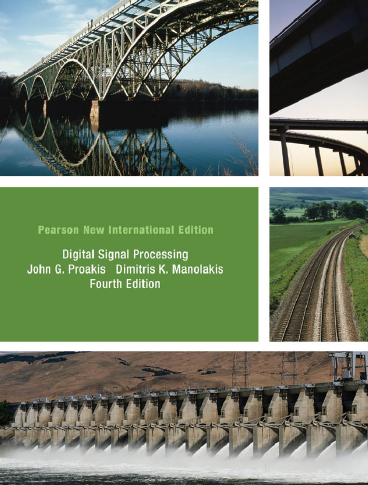
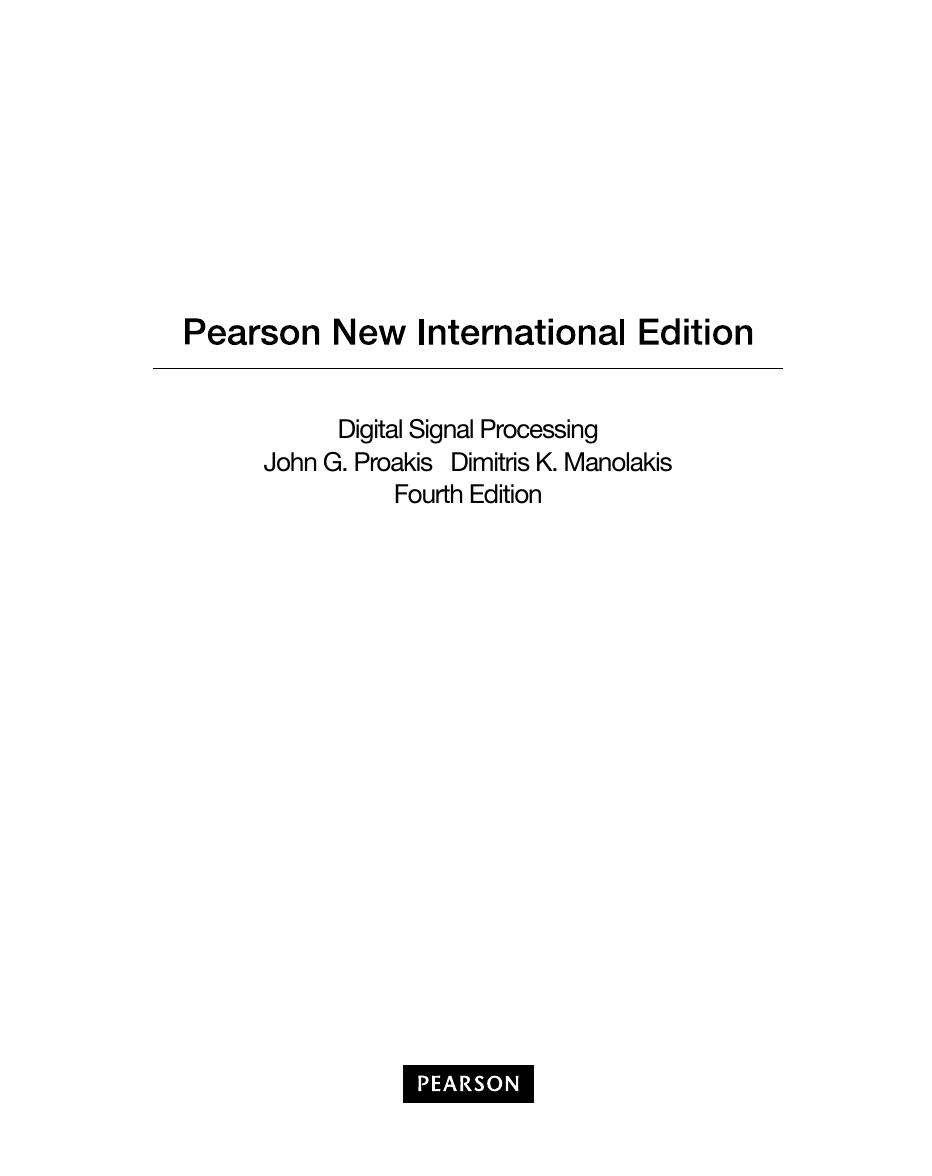

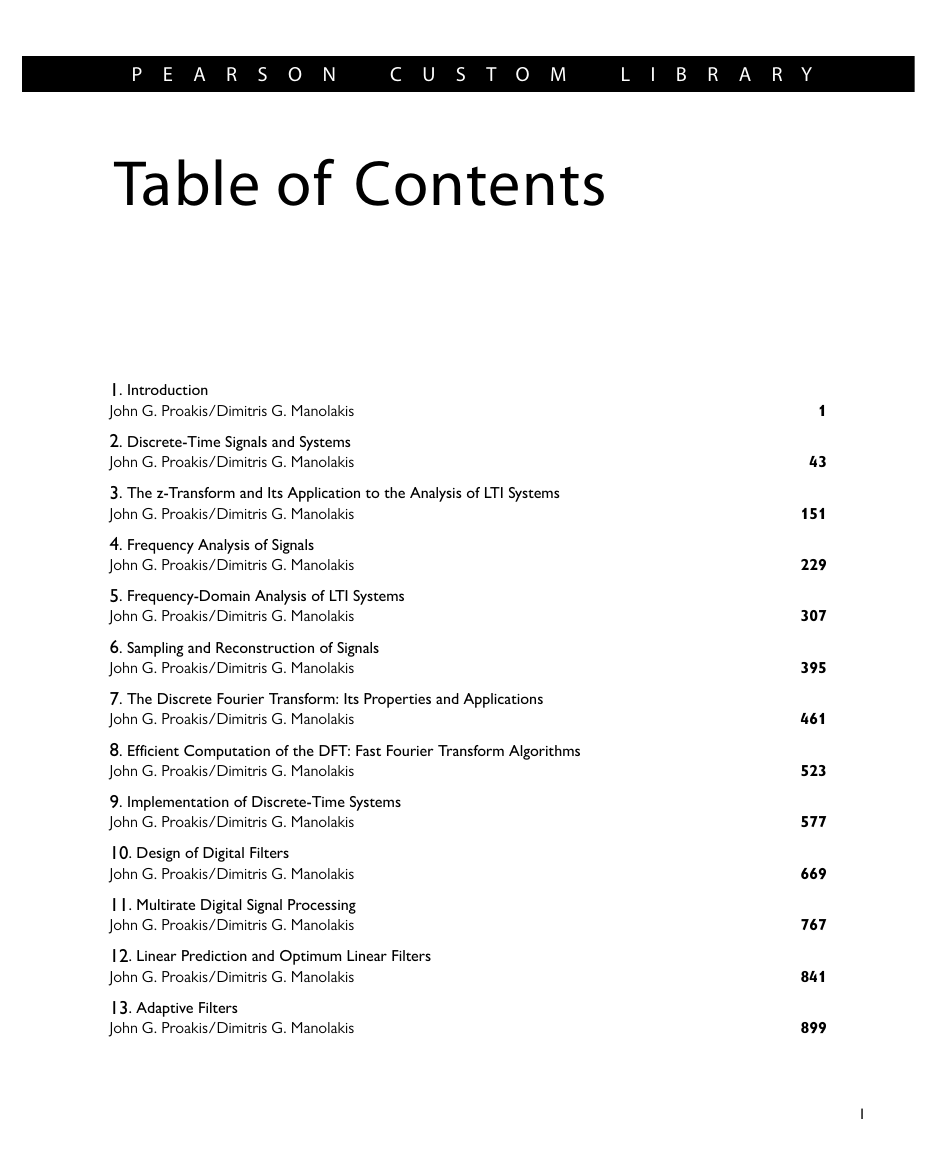
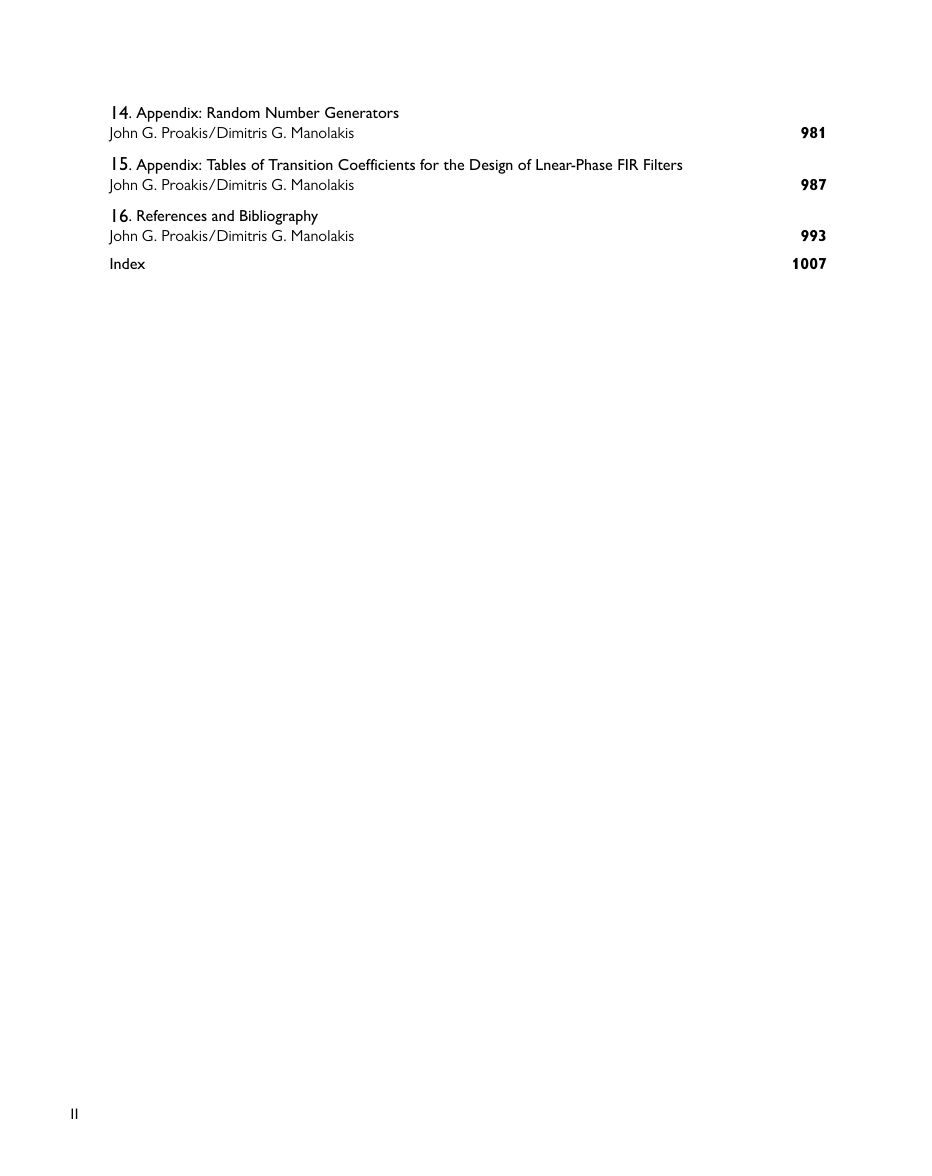
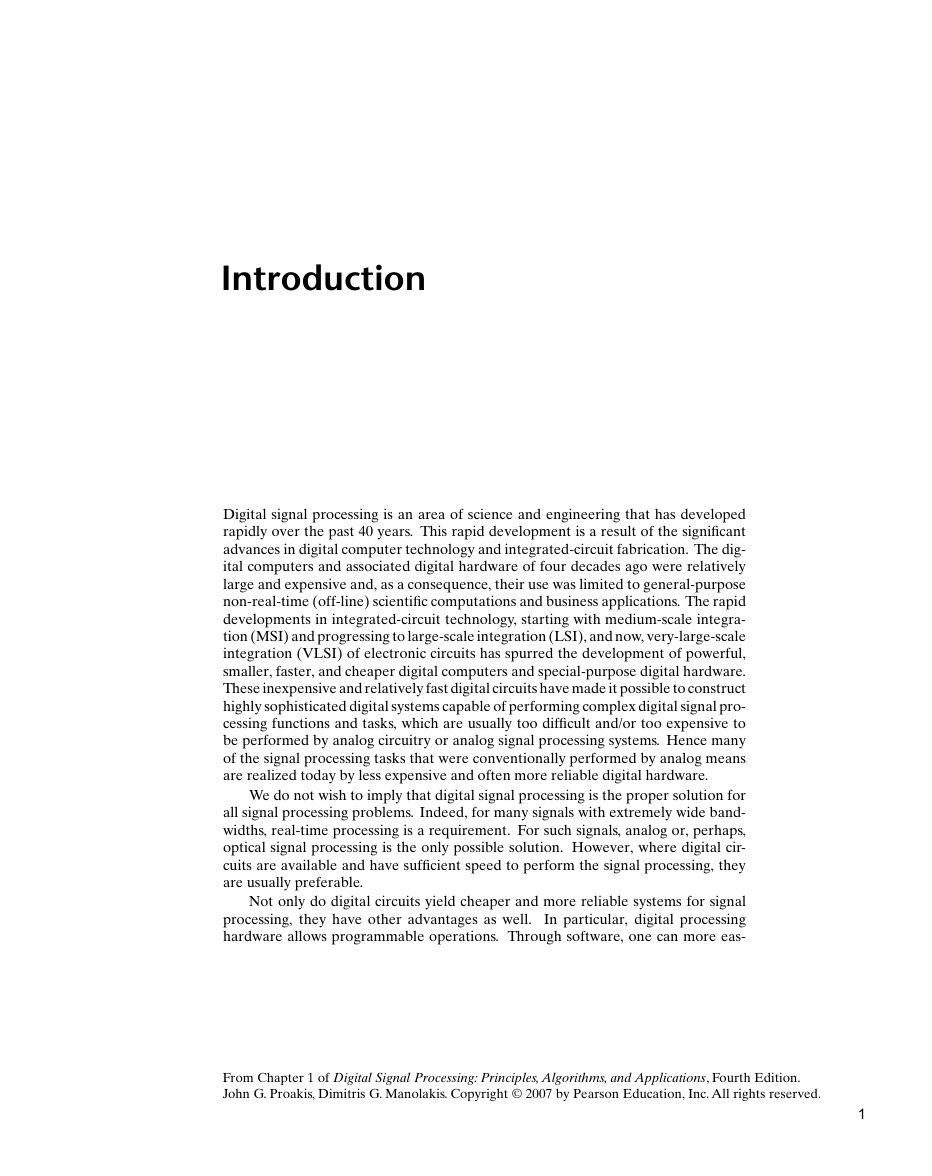
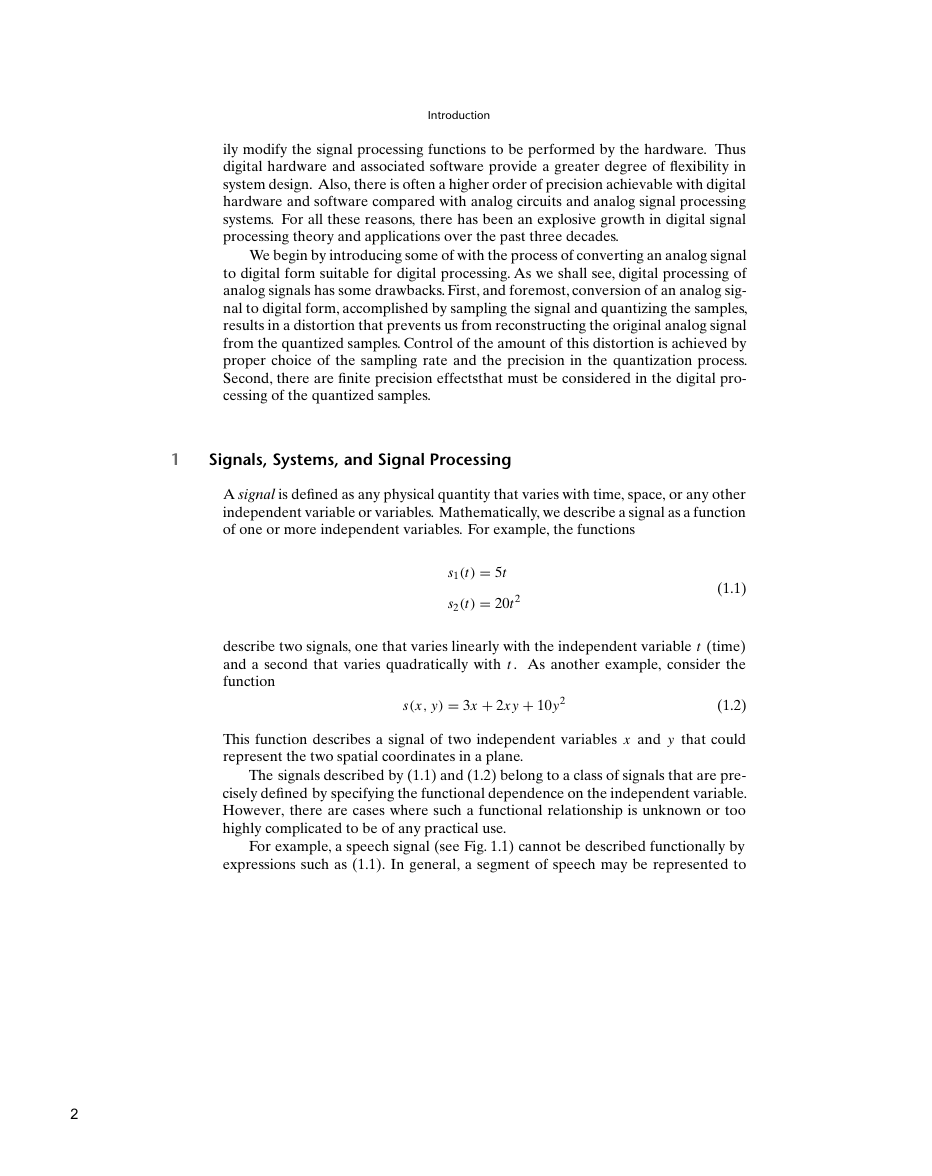
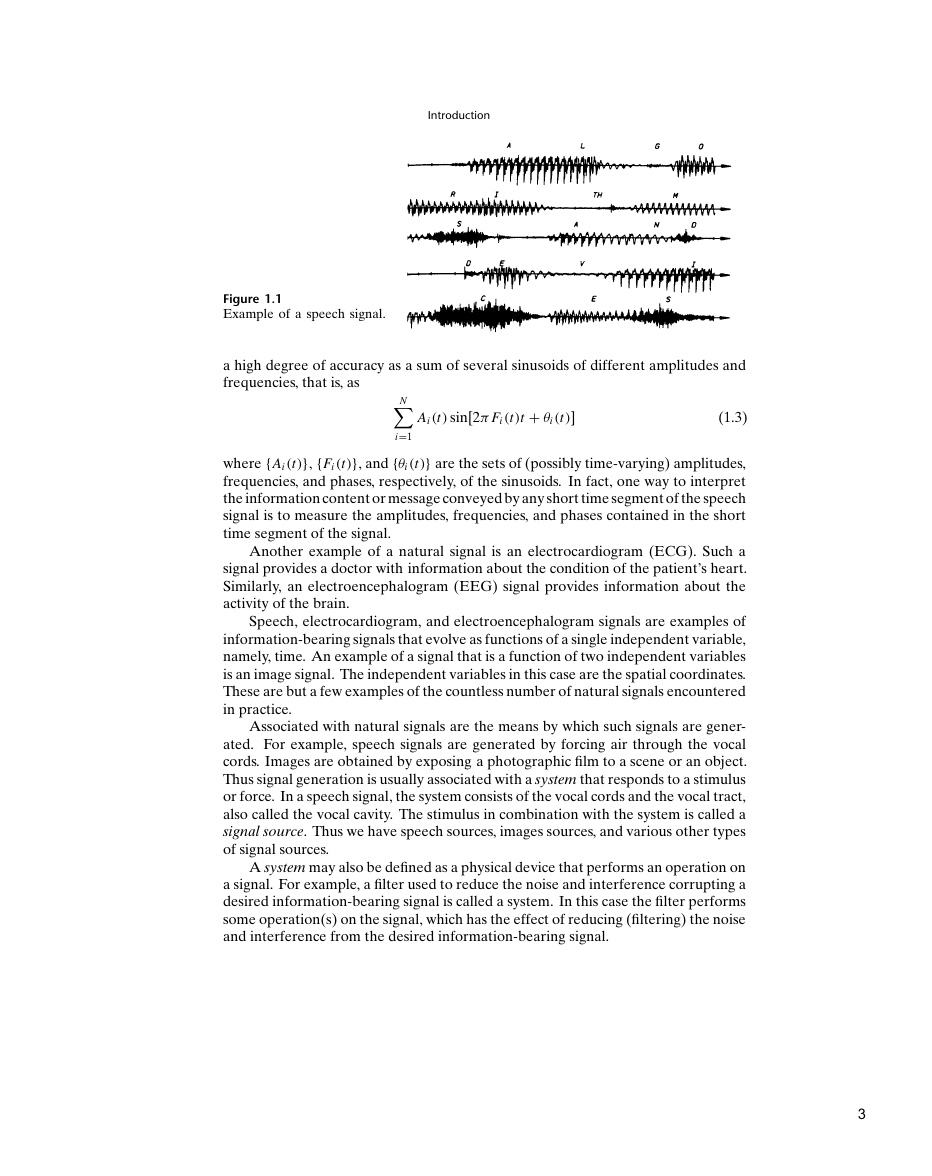








 2023年江西萍乡中考道德与法治真题及答案.doc
2023年江西萍乡中考道德与法治真题及答案.doc 2012年重庆南川中考生物真题及答案.doc
2012年重庆南川中考生物真题及答案.doc 2013年江西师范大学地理学综合及文艺理论基础考研真题.doc
2013年江西师范大学地理学综合及文艺理论基础考研真题.doc 2020年四川甘孜小升初语文真题及答案I卷.doc
2020年四川甘孜小升初语文真题及答案I卷.doc 2020年注册岩土工程师专业基础考试真题及答案.doc
2020年注册岩土工程师专业基础考试真题及答案.doc 2023-2024学年福建省厦门市九年级上学期数学月考试题及答案.doc
2023-2024学年福建省厦门市九年级上学期数学月考试题及答案.doc 2021-2022学年辽宁省沈阳市大东区九年级上学期语文期末试题及答案.doc
2021-2022学年辽宁省沈阳市大东区九年级上学期语文期末试题及答案.doc 2022-2023学年北京东城区初三第一学期物理期末试卷及答案.doc
2022-2023学年北京东城区初三第一学期物理期末试卷及答案.doc 2018上半年江西教师资格初中地理学科知识与教学能力真题及答案.doc
2018上半年江西教师资格初中地理学科知识与教学能力真题及答案.doc 2012年河北国家公务员申论考试真题及答案-省级.doc
2012年河北国家公务员申论考试真题及答案-省级.doc 2020-2021学年江苏省扬州市江都区邵樊片九年级上学期数学第一次质量检测试题及答案.doc
2020-2021学年江苏省扬州市江都区邵樊片九年级上学期数学第一次质量检测试题及答案.doc 2022下半年黑龙江教师资格证中学综合素质真题及答案.doc
2022下半年黑龙江教师资格证中学综合素质真题及答案.doc